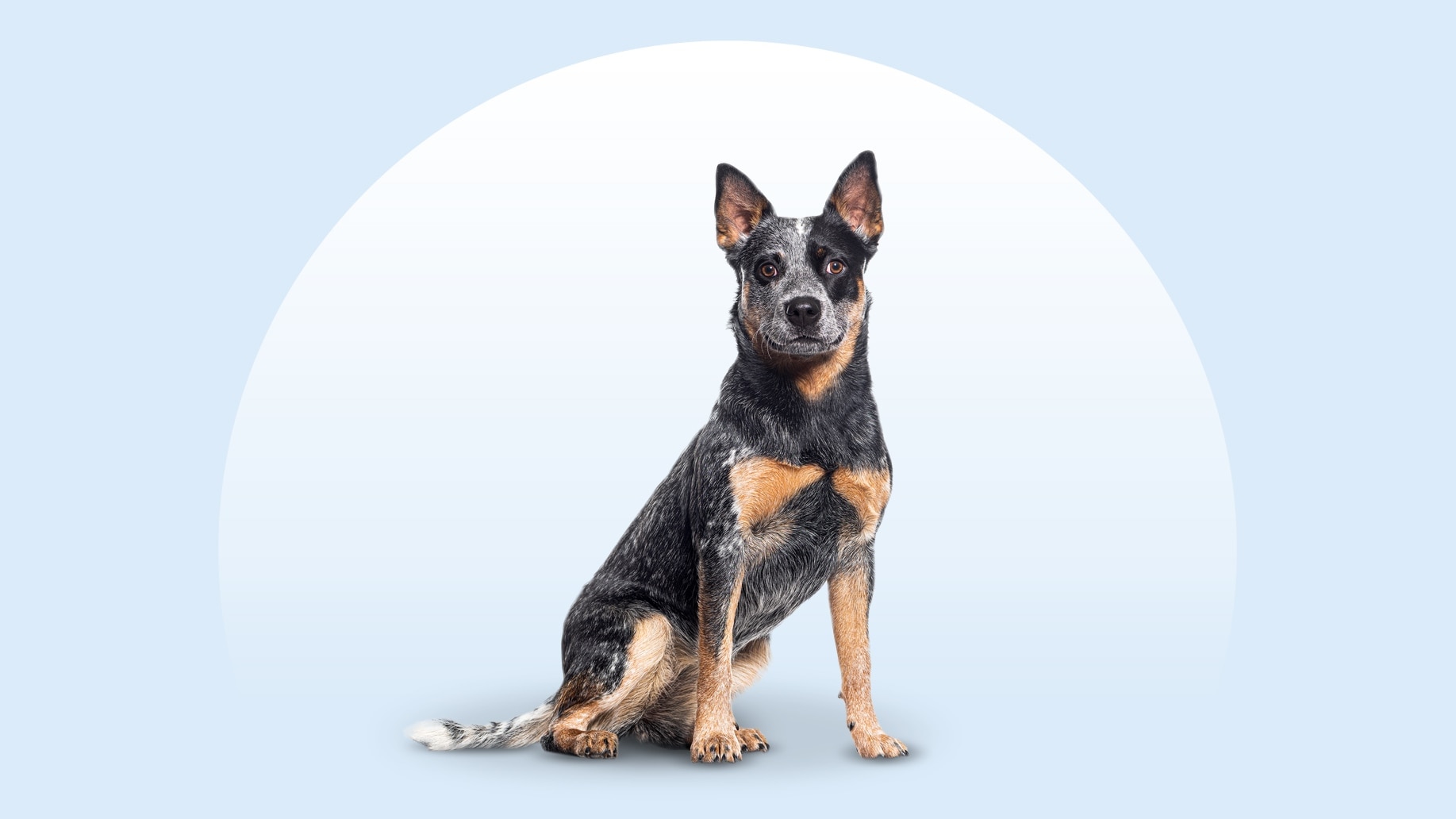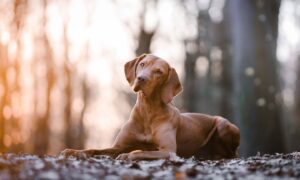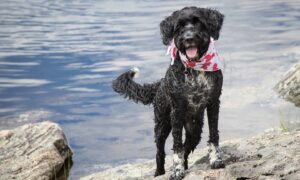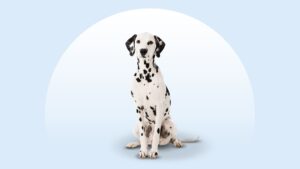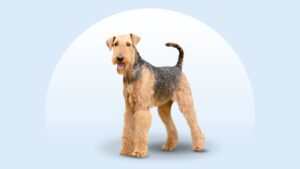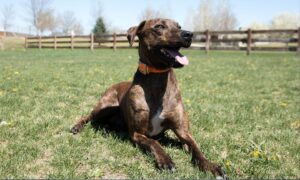Australian Cattle Dog
Updated February 12, 2025
Australian Cattle Dog
Updated February 12, 2025
Australian Cattle Dogs are best for active, experienced pet parents and families who can provide lots and lots of exercise and mental stimulation. Also known as Blue Heelers, these energetic dogs also thrive in homes with large yards where they can run around. Oh, and they love a good, long hike!
Whip Smart, Hard-Working, Adventurous
Male: 35-50 pounds
Female: 35-50 pounds
Male: 18-20 inches
Female: 17-19 inches
12 to 16 years
Blue, Blue Mottled, Blue Speckled, Red Speckled, Red Mottled
As their name implies, Australian Cattle Dogs (aka Blue Heeler or Australian Heeler) are born and raised to herd cattle. Don’t have cattle for them to herd? Then you just found a new workout buddy. Like most herding breeds, these pups are high-energy, agile and ready to get to W-O-R-K. Combine those traits with their sharp wit and you’ve got a furry partner in crime who’s always ready for action.
Australian Cattle Dog Characteristics
Australian Cattle Dog Appearance
Blue Heelers always have a glint in their eyes as if they’re ready to share in your next adventure (they are!). These people-pleasers are born with white coats and get their own bespoke looks—bluish-gray or red with speckles—as they grow up. Their pointy ears and angular faces are reminiscent of Australia’s wild dingo, of which they’re related. But while their wild looks and compact, muscular build say, “I’m all business,” their expressive faces say, “I’m all yours.”

- Ears
Australian Cattle Dog ears are moderately sized, set wide on the skull, broad at the base and pricked when alert.
- Eyes
They have dark brown eyes with an alert and intelligent expression.
- Nose
Blue Heelers typically have black noses.
- Coat Length
Blue Heelers typically have a double coat with a short, dense undercoat and a longer, rain-resistant outer coat.
- Coat Color
Blue Heelers come in six colors, ranging from blue, blue mottled, blue speckled to red speckled. They also can have some tan around their face, neck, chest and hindquarters.
- Tail
The Australian Cattle Dog has a tail set moderately low. They tend to have a good brush, and at rest, they hang with a slight curve.
Australian Cattle Dog Temperament
Australian Cattle Dogs were bred to be working dogs and are classified as members of the herding group (dogs born to herd livestock). Most of these dogs are at their happiest when working—or at least staying busy. As such, this breed thrives in active households and hates being bored.
Because they’re herders, raising an Australian Cattle Dog means training and socialization are important. This is an independent breed who doesn’t want to share. So, start introducing your pup to people, other dogs and situations while they’re young to help them be accepting of new experiences as they grow up. When it comes to obedience training, consistency is important. Regular training sessions will help this tenacious breed be a well-behaved family member. Australian Cattle Dogs may sound like a handful, but with confident pet parents to channel their energy the right way, these dogs are unstoppable.
How to Care for a Australian Cattle Dog
The Australian Cattle Dog breed has hard work and people-pleasing in their DNA, but that doesn’t make the breed low maintenance. Daily activity and training will take more time than grooming, but they’re happy to take up exercising with you as a substitute for farm life.
Grooming
Training
Diet
Exercise
Environment
Australian Cattle Dog Health
While the Australian Cattle Dog breed is known to have a sturdy constitution and a robust life expectancy of 12-16 years, there are some health issues to look out for in the breed.
- Progressive Retinal Atrophy (PRA): Australian Cattle Dogs are at higher risk for late/adult-onset PRA. Initially, PRA presents itself as retinal deterioration, and over time, it can lead to a total loss of vision in your dog. Common symptoms include difficulty seeing at night and widened pupils. Sometimes the development of cataracts may occur in the degeneration’s late stages. Unfortunately, there are no effective treatments for PRA. If this happens, dogs with vision loss can still live happy lives with the love of parents who help them navigate the world around them.
- Hip Dysplasia: Australian Cattle Dogs are also susceptible to hip dysplasia. This inherited condition arises when the hip joint’s ball and socket fail to fit snugly together. Common symptoms include limping, “bunny hopping” (especially when running) and trouble jumping. Pet parents may be happy to know that there are various treatments for hip dysplasia, ranging from lifestyle changes (e.g. dieting and weight loss) and medications to surgery.
- Deafness: Deafness in heelers is typically an inherited condition. This impairment can vary widely from dog to dog. Common indications of deafness include excessive barking and a lack of reaction to normal noises. Currently, there is no treatment for deafness in dogs. Again, pet parents are encouraged to help their pups navigate the world as best they can. Australian Cattle Dogs are extremely intelligent and highly trainable, so teaching them hand signals can be very useful as they lose their hearing.
Australian Cattle Dog History
The origin of the Australian Cattle Dog began in the 19th century when the British brought the Smithfield sheepdog to Australia. This dog, however, did not fare too well on the rough terrain and sweltering heat, so Australian settlers quickly sought to create a herding breed to thrive in that environment.
Initially, Smithfields were bred with dingoes as well as the Scottish Highland Collie. The Blue Heeler we know today is a cross between a mixed dingo-Collie breed and Dalmatian.
While their history began in Australia, the breed first came to America in 1950. Australian Cattle Dogs were admitted to American Kennel Club in 1980, and they became a charter member of AKC Herding Group at its inception.
When looking for information on the Australian Cattle Dog, you’ll find this breed has plenty of aliases, including the Queensland Heeler (a nod to its origins) and Blue Heeler. The term heeler came to be associated with them as a clever reference to their herding style of nipping at the heels of cattle to move them along, while the term blue refers to their popular blue-gray speckled coats.
If you’re looking for an Australian Cattle Dog puppy, you can find reputable breeders at the American Kennel Club’s website. You can expect puppies to cost between $600-$1,000, but they can go upwards of $2,000 for championship lines. For that price, you’re likely getting a pup who’s been screened for health and temperament issues and may come with pedigree papers. If you’d like to adopt a pup, reach out to Blue Heeler rescues or keep an eye out for the breed at your local animal shelter. You can also search Chewy’s database of adoptable dogs in your area.
FAQs
How long do Australian Cattle Dogs live?
Do Australian Cattle Dogs shed?
How big do Australian Cattle Dogs get?
What are the most common Australian Cattle Dog mixes?
Expert input provided by Rendy Schuchat, M.A., Owner/Founder and Certified Head Dog Trainer at Anything Is Pawzible; and Matt Beisner CPDT-KA, star of “Dog: Impossible” on Nat Geo Wild and Disney+.
Breed characteristic ratings provided by veterinarian Dr. Sarah J. Wooten, DVM, CVJ, a veterinarian at Sheep Draw Veterinary Hospital in Greeley, Colorado; dog trainer and behavior consultant Irith Bloom, CPDT-KSA, CBCC-KA, CDBC, owner of The Sophisticated Dog, LLC, in Los Angeles; and certified animal behavior consultant Amy Shojai, CABC, in Sherman, Texas.
The health content was medically reviewed by Chewy vets.
